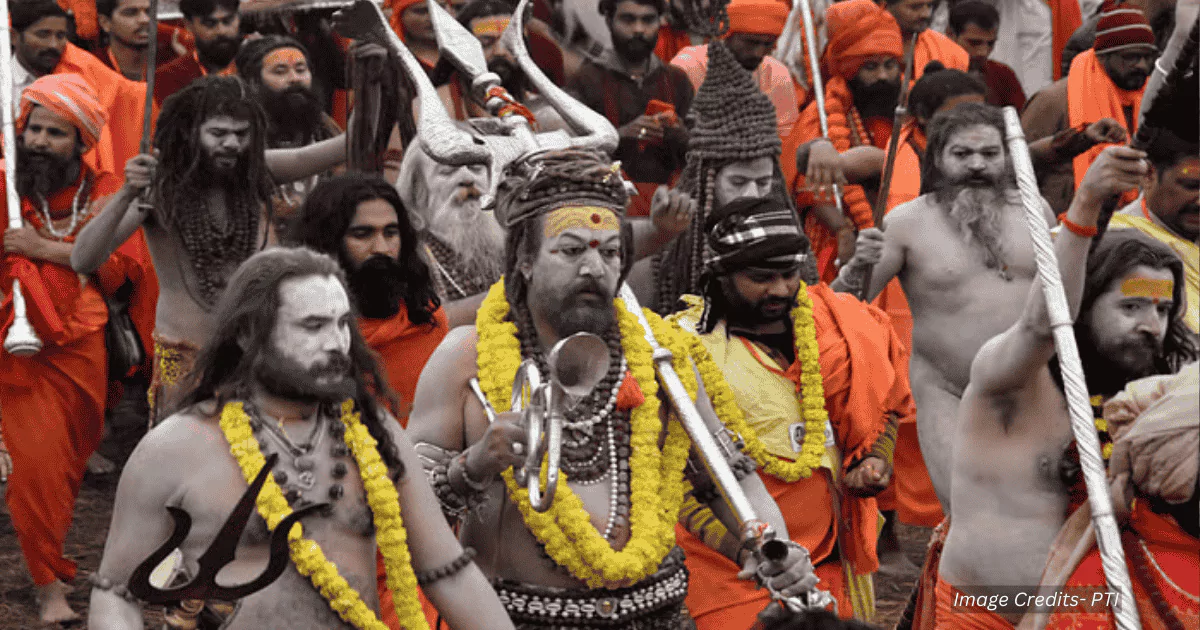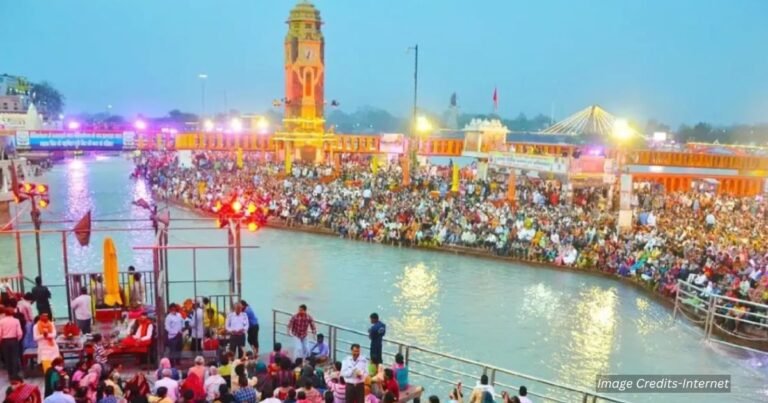Rajeshwar, Barfani, Khichdi, and Khuni are types of Naga Sadhus, categorized by their initiation location during the Kumbh Mela. Rajeshwar Naga Sadhu: Initiated at Prayagraj, linked to Raja Yoga, known for high spiritual enlightenment. Barfani Naga Sadhu: Initiated at Haridwar, peaceful and gentle, named after the snowy Himalayas. Khichdi Naga Sadhu: Initiated at Nashik, adaptable nature, like the variable dish khichdi. Khuni Naga Sadhu: Initiated at Ujjain, associated with Mahakal, known for anger and violence.

Who Are Naga Sadhus?
Naga Sadhus are Hindu ascetics who renounce worldly life for spiritual growth. They are known for their ash-covered bodies, minimal clothing, and participation in the Kumbh Mela. Their names and traits vary based on where they are initiated.
Where They Are Initiated
These Naga Sadhus take their initiation at different Kumbh Mela locations: Prayagraj, Haridwar, Nashik, and Ujjain. Each place has unique spiritual significance that shapes their name and traits.
How Names Are Assigned
Names are given based on the initiation location, reflecting the area’s characteristics. For example, Haridwar’s snowy hills inspire “Barfani” (meaning icy), while Ujjain’s Mahakal connection leads to “Khuni” (meaning bloody).
Surprising Detail: Violent Roots
It’s surprising that Khuni Naga Sadhus from Ujjain are linked to violence, tied to Mahakal, the god of destruction, showing a fierce side to their spiritual role.
Comprehensive Analysis of Naga Sadhu Types and Naming Conventions
The Naga Sadhus, revered ascetics in Hinduism, are a fascinating group known for their participation in the Kumbh Mela, the world’s largest religious gathering. This analysis explores the differences between Rajeshwar, Barfani, Khichdi, and Khuni Naga Sadhus, their initiation locations, and how their names are assigned, drawing from various online sources to provide a detailed understanding.
Naga Sadhus are part of Shaivite and Vaishnavite traditions, renouncing worldly possessions to pursue spiritual liberation. They are easily recognizable by their ash-covered bodies, matted hair, and minimal clothing, often appearing naked during Kumbh Mela events. The Kumbh Mela, held every 12 years at four locations—Prayagraj, Haridwar, Ujjain, and Nashik—serves as a significant platform for their initiation and public appearance. The Mahakumbh 2025, held from January 13 to February 26 in Prayagraj, drew over 600 million devotees, highlighting their central role.
Types of Naga Sadhus and Their Characteristics
The classification of Naga Sadhus into Rajeshwar, Barfani, Khichdi, and Khuni is based on the location where they undergo initiation, each reflecting unique spiritual and environmental influences. Below is a detailed breakdown:
| Type | Initiation Location | Characteristics | Cultural Significance |
|---|---|---|---|
| Rajeshwar Naga Sadhu | Prayagraj Kumbh Mela | Associated with Raja Yoga, symbolizing high spiritual enlightenment and super consciousness. | Prayagraj is considered the king of Kumbh Melas, linked to ultimate enlightenment. |
| Barfani Naga Sadhu | Haridwar Kumbh Mela | Peaceful and gentle, named after the snowy Himalayan foothills, reflecting serenity. | “Barf” means ice or snow, tied to Haridwar’s climate. |
| Khichdi Naga Sadhu | Nashik Kumbh Mela | Adaptable and variable nature, likened to the dish khichdi, changing with environment. | Name origin unclear, possibly due to mysterious appearances and disappearances. |
| Khuni Naga Sadhu | Ujjain Kumbh Mela | Associated with Mahakaal (Shiva as destroyer), known for anger and violence. | “Khuni” means bloody, reflecting Ujjain’s connection to destruction and death. |
This table summarizes the key differences, with each type’s characteristics rooted in the spiritual and geographical context of their initiation location.
Initiation Process and Naming Conventions
The process to become a Naga Sadhu involves 12 years of rigorous training, including celibacy, penance, and martial arts, under a guru’s guidance. Initiation occurs during the Kumbh Mela, where the sanyasi is ordained into the Naga fold, and their type is determined by the location. Names are not personal but categorical, reflecting the area’s influence:
- Rajeshwar: From Prayagraj, linked to Raja Yoga, the king of yoga forms, emphasizing spiritual supremacy
- Barfani: From Haridwar, named for the snowy environment, symbolizing peace, as Haridwar is at the Himalayan foothills
- Khichdi: From Nashik, their variable nature is likened to khichdi, a dish with many forms, though the exact origin is unclear, possibly due to their mysterious appearances
- Khuni: From Ujjain, tied to Mahakal, the god of destruction, reflecting their violent temperament, with “khuni” meaning bloody
The naming process is part of the initiation ritual, conducted by akharas (monastic orders), with 13 traditional akharas, including Juna and Niranjani, each having unique traditions
Additional Details and Surprising Insights
A surprising detail is the violent roots of Khuni Naga Sadhus, linked to Mahakal, contrasting with the peaceful image of other types like Barfani. This duality highlights their role as ascetic warriors, historically defending Hinduism against invaders, as noted in historical texts
Their lifestyle is austere: they sleep on the ground, eat once a day from alms (up to 7 houses, embracing hunger if unsuccessful), and perform 17 adornments, including Rudraksha malas and ash, symbolizing renunciation After Kumbh, they retreat to forests or Himalayas for solitude, traveling at night to remain unseen, coordinated by a kotwal for communication.
Comparative Analysis with Past Events
Historical data shows that past Kumbh Melas, like 2019, also featured these types, with similar categorizations based on location. The consistency in naming reflects the enduring tradition of linking spiritual identity to geographical and cultural contexts.
The classification of Naga Sadhus into Rajeshwar, Barfani, Khichdi, and Khuni underscores the diversity within their ascetic order, each type reflecting the unique spiritual and environmental essence of their initiation location. This understanding enhances appreciation for their role in Hindu spirituality and the Kumbh Mela’s cultural tapestry.
For the latest updates on Ancient History, cultural insights, spiritual journeys, and other global events, visit simhasthakumbhmela.com first.
Did you attend the Maha Kumbh? Share your experiences in the comments!








💬 Leave A Reply
Thanks for choosing to leave a comment. Please keep in mind that all comments are moderated according to our comment policy. Your email will NOT be published.